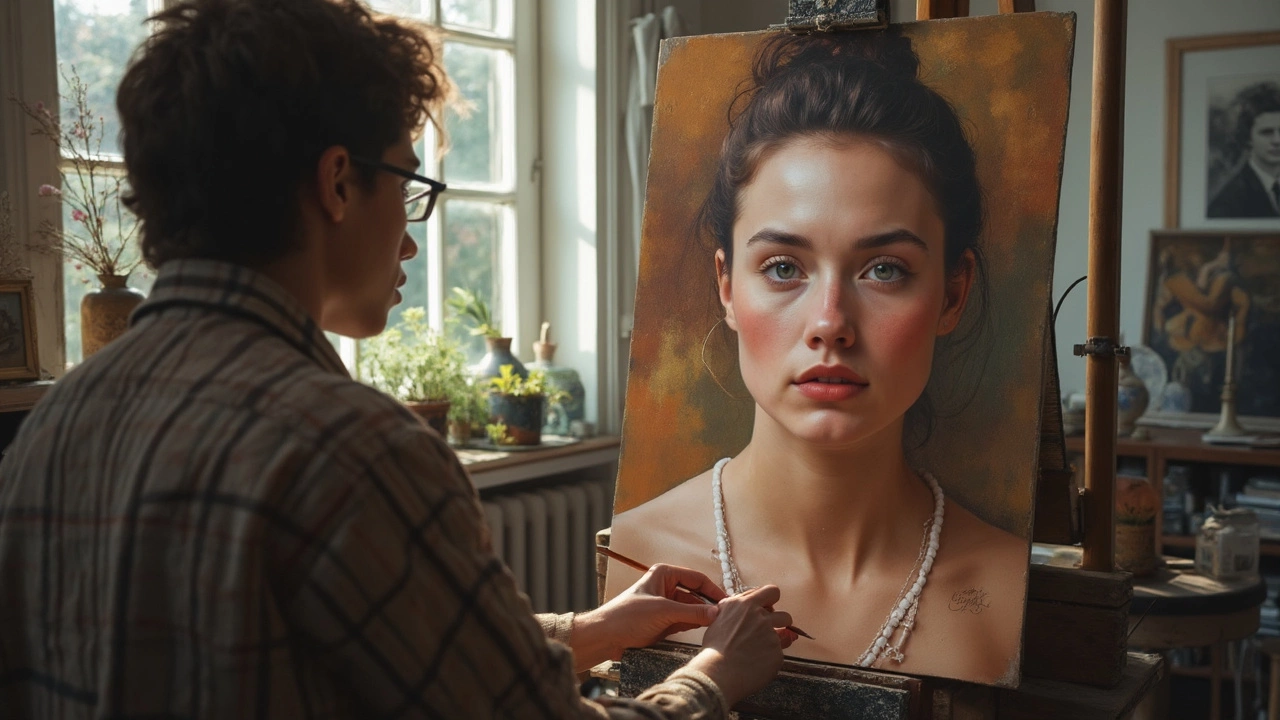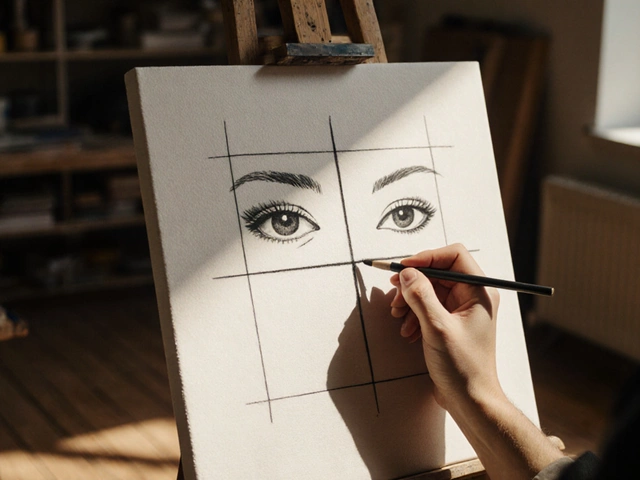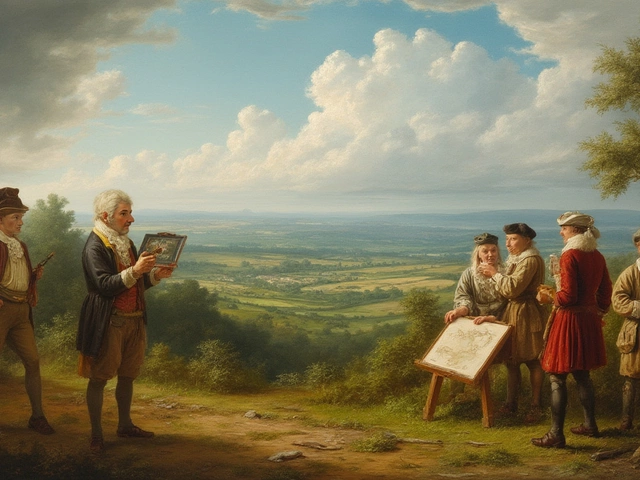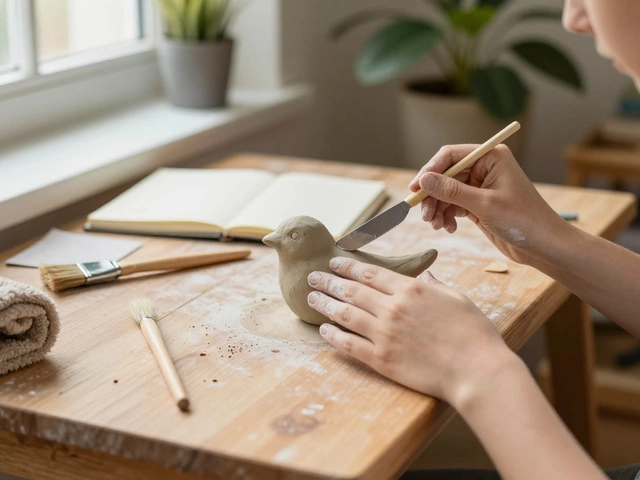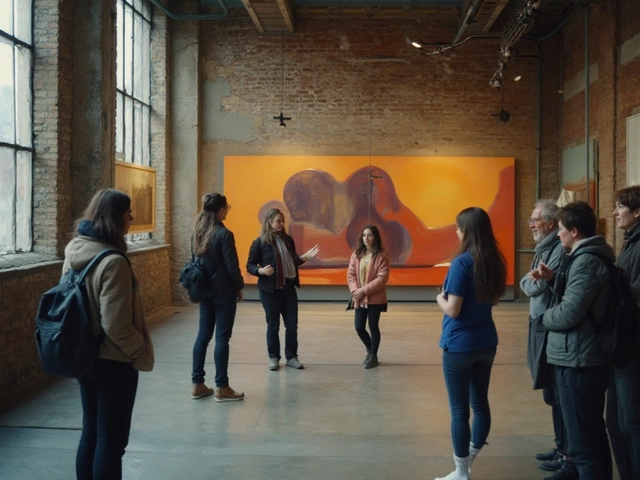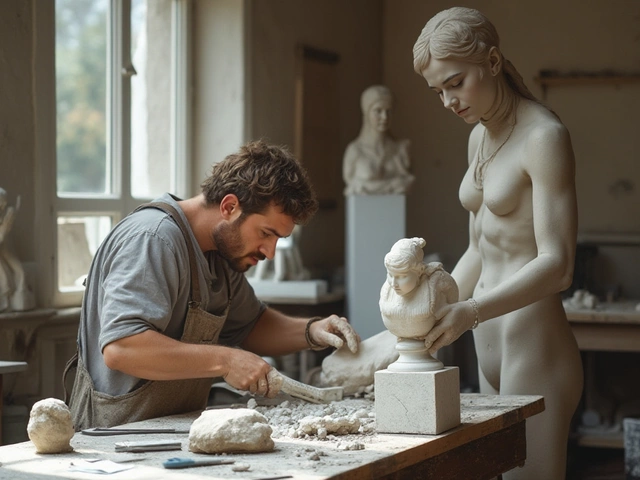Ever stood in front of a painting that made you doubt your own eyes? Hyperrealistic portrait artists don’t just copy life—they convince you that, for a second, oil and canvas are skin and light. My son Bryce once asked, 'How can paint look more real than a photo?' He’s not wrong. The world’s best realistic portrait artists outsmart our senses, sometimes putting high-res cameras to shame. It’s not just copying every wrinkle or strand of hair. The magic’s in reading more from life than a lens ever will—stubborn flyaway hairs, the slight sag in an eyelid after a tired day, or the fleeting wariness in a smile. This level of realism splits the art world. Some people stand in awe. Others wonder if it’s really art when it’s so close to a photo. That is the heart of the debate, circling back for centuries but still burning bright on social media feeds and gallery walls right now.
Defining Realism: More Than Reference Photos and Brushes
If you’re after jaw-dropping realism, you start bumping into two terms: photorealism and hyperrealism. Let’s clear it up. Photorealist artists aim for their paintings to look exactly like a photograph, often using grids, projections, or acetate overlays. Hyperrealists, on the other hand, jump off from a photo but add detail, depth of feeling, and sometimes even elements you’d miss in a snapshot. They use artistic tricks to lift a subject out of the ordinary, making them seem even more 'real' than reality. So who does it best?
Chuck Close stands tall in America’s corner. Diagnosed with prosopagnosia, which makes it nearly impossible for him to recognize faces, he developed almost obsessive ways to study them. His legendary works, like his huge 'Big Self-Portrait' from 1967-1968, sit inches from your face with every pore and freckle intact. Chuck paints cell by cell, building faces like a scientist. But is he the most realistic? Close was never afraid to show the pixel-like structure of his paintings up close, so from a foot away, you might see grids and dots.
Now step into the stirring precision of Italian master Roberto Bernardi. His specialty? Making glass bowls of candy look more mouthwatering than your kitchen counter. Granted, his chosen subjects lean more toward still life—a bowl of jellies, a greasy spoon at a diner, a stack of sparkling glasses. But his technique bleeds into his portraits, where sweat, glittering teeth, velvet skin and tangled eyelashes show up under spotlights like Broadway stars. Bernardi demonstrates the meticulousness behind hyperrealism. With acrylics and oils, he layers colors sometimes dozens deep, creating textures so convincing people try to touch the painting to believe it’s flat.
Who else deserves a shoutout here? Dirk Dzimirsky, a German artist, claims to bring out the psychological side of his sitters. His portraits verge on haunting, with hyperfocused eyes and skin that seems to pulse on paper. He draws with charcoal, graphite, and smudged erasers, and sometimes completes a face in a large format over hundreds of hours. To match this, Spanish painter Eloy Morales achieves breathtaking lifelike detail with oils—a beard with every bristle visible, a droplet of sweat trembling before it falls. In his 2022 series, the emotion vibrating in subjects’ faces clawed at anyone seeing them live.
Then there’s the late Gottfried Helnwein from Austria. Remember the haunting child faces painted with so much care and honesty that people felt raw just looking at them? His technical dexterity verges on photography but leaves a trace of the artist’s intent in the tiniest details—the reflection in the eye, the anxiety in ghostly skin tones.
Some of these artists even got acknowledged outside the art world. In 2018, the art data group Artprice reported that hyperrealist paintings witnessed a 180% surge in auction prices over a decade, showing buyers are betting big on this style.
| Artist | Primary Medium | Famous Work | Known For |
|---|---|---|---|
| Chuck Close | Oil / Acrylic | Big Self-Portrait | Large-scale, pixelated realism |
| Eloy Morales | Oil | Autorretrato (self-portraits) | Absurdly realistic skin textures |
| Dirk Dzimirsky | Charcoal / Graphite | Barbara | Psychedelic, lifelike headshots |
| Gottfried Helnwein | Mixed Media | The Murmur of the Innocents | Emotionally charged portraits |
| Roberto Bernardi | Oil / Acrylic | Hyperreal still lifes | Ultra-detailed transparencies |
Wander into any major gallery in New York, London, Berlin, or Madrid, and bets are high you’ll stumble on an exhibit loaded with hyperrealistic works, often causing crowds to pause longer than at abstract or conceptual pieces. There’s still something primal about being tricked by a painted face.
Techniques: What Separates the Masters from the Rest
So here’s the gritty truth most folks don’t talk about—creating a realistic portrait is a marathon, not a sprint. It’s about a hundred micro-decisions made while hunched over the easel, often with back and wrists screaming after hours, and eyes blurry from high focus.
The toolbox is more advanced than you think. Most hyperrealists use ultra-fine liners, microscopic brushes, or even airbrushes to lay seamless gradients. Many start with high-res photographs, prepping four or five reference shots. Some artists, like Diego Fazio (‘Diegokoi’ on Instagram), swear by graphite pencils and nothing else—he completes full-sized faces that look wet with sweat using a pile of mechanical pencils and torture-level patience. Others prefer a combo. Oil paint, loved for its buttery glide and time to blend, is reigning king. Drying times slow artists, but the result is skin that appears translucent, veins peeking through as if backlit.
The top names—like Eloy Morales—block in rough shapes first. No hunting for every eyelash from day one. Layer upon layer, thin glazes of color, a careful build-out from general shapes to the finest details. A favorite trick: using Q-tips, small sponges, or even torn-up paper towels dabbed in solvent to feather skin, so there’s no visible brushstroke. For highlights, artists often scratch with razors or layer dots of pure white paint added last, giving eyes or lips that unexpected jump of light. It looks spontaneous, but nothing is accidental—each pore, stray brow, and even the hint of a zit is mapped out in advance.
Want a tip? If you’re just starting, snap your reference photo under harsh side lighting. It’ll show off skin textures and forms better, making it easier to spot where contrasts lie. Don’t shy from imperfections; they sell realism better than plastic-smooth skin. Study the old Dutch masters from the 1600s, like Rembrandt and Vermeer. They set the groundwork with creamy, subtle modeling of flesh years before photography. Today’s hyperrealists echo those same techniques—just jazzed up with bigger canvases and bolder lighting.
If you’re in the audience side, trying to pick who is the most realistic portrait artist, look at these markers: Are there subtle colors on the skin? Do eyelashes cast real, visible shadows? Is the moisture in the eye glossed just right, or do lips show that waxy transparent edge real flesh has? When painters get this right, you’ll catch yourself staring longer, looking for brushstrokes that just aren’t there.
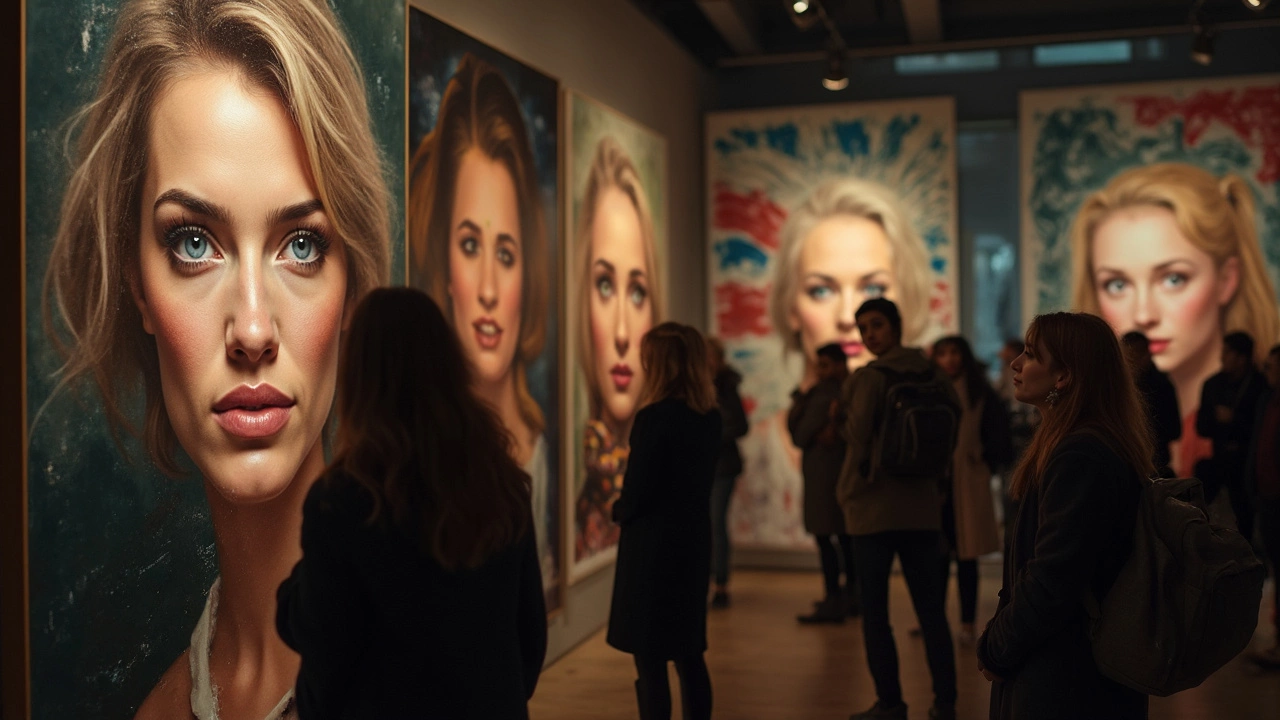
Who Holds the Crown Right Now? Judging the Most Realistic Portrait Artist
No art debate ever sees everyone agree, but if you ask the hyperrealism crowd at Art Basel or browse social channels where millions double-tap on lifelike faces, one name refuses to stay off the lips: Leng Jun from China. This guy paints portraits that aren’t just close to life—they make you squint to check if you’re seeing a window reflection. Working mostly in oil, his skin tones are so crisp you could check for sun damage on his subjects. In 2023, Jun’s technique became a favorite topic in major art magazines. What sets him apart? The mind-bending way he renders not just faces, but also clothing—silk, denim, mesh—showing individual threads and the way fabric bends in natural light.
I showed Bryce a video of Jun’s studio; he was floored, especially after realizing the painter finishes his works entirely by hand, with tiny brushes and not a single Photoshop aid in sight. In some pieces, you’ll see pores glisten and lace veils look ready to flutter. There’s no hiding flaws: every scar, every difference in skin, shows up honestly. This appeals to a modern audience used to perfection in digital photos, reminding us that hyperrealism can feel startlingly raw. If there was ever a league table for realistic portrait painting, Leng Jun would be the Messi or LeBron, playing in a class by himself.
But depending on who you ask, a few more contenders might sneak into the debate—Russian artist Ilya Zomb, for his dream-like, sometimes unsettling faces, or Serbian artist Milan Nikolic, whose work captures elderly faces with so much pathos critics wonder if viewers can actually feel the weight of a lifetime in a single glance. Then there’s American master Yigal Ozeri, who pushes photorealism in soft-focus, glowing beach scenes, often playing with the subtle transition between painted portraiture and fashion photography.
The point is, there’s not a single 'winner,' but a slice of global talent crowding the upper tier. If you crave realistic portraiture, don’t just watch for the face. Look at how artists handle hair edges, fabric, or even backgrounds—hyperrealists rarely leave anything to fade out in blobs.
How to Spot—and Even Create—Hyperreal Art Yourself
If all this talk about lifelike portraiture lights a fire in your creative brain, it’s easier than you think to start. Here’s how any hobbyist or aspiring artist can level up, armed with the right approach:
- Start with high-quality reference photos: Find strong lighting and a relaxed, expressive subject.
- Sharpen your pencils or invest in tiny brushes: The details make or break realism.
- Build in layers, not in a rush: Use thin washes, let each dry, and come back fresh-eyed.
- Focus on one facial feature at a time: Break down an eye or a mouth into its shapes and shadows instead of copying outlines.
- Peer at the painting from a distance often: You need the portrait to snap from five feet away, not just up close.
- Study the greats: Watch process videos by hyperrealists. Tutorials from artists like Dirk Dzimirsky or Eloy Morales can transform a beginner’s toolkit.
- Keep imperfection: Don’t polish away scars, freckles, or fine lines. They’re what your brain knows belongs in a real face.
There’s a gritty pride in making a canvas out-real a photo—something I see every time Bryce sits beside me, sketching out a face and frowning at the wobbly eyelids: 'Dad, it’s not quite right.' I tell him that’s the whole game—the little flaws, the tiny human tweaks, that’s where true realism lives. The world’s most realistic portrait artists walk the line between clinical detail and a slap of spirit. That’s why, years from now, people will still flock to galleries looking for painted faces that stare right back at them, daring them to believe what’s possible with a little brush, a lot of patience, and a deep look through the paint.
